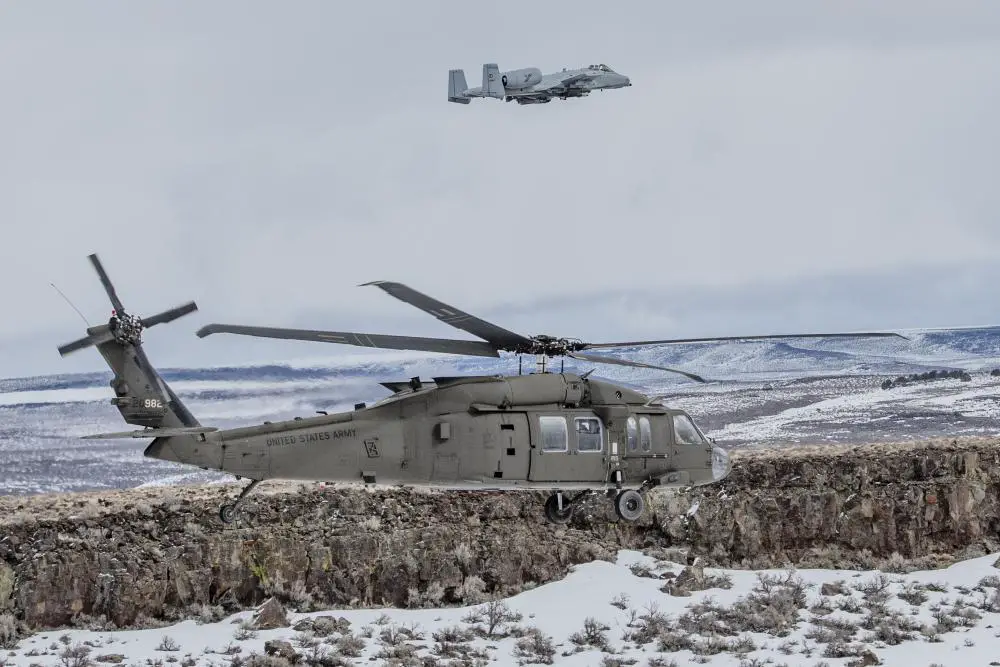Idaho Army National Guard and Idaho Air National Guard aviation units conducted combat search and rescue training together March 9 throughout Idaho’s Owyhee Mountains. The training rescue missions involved 124th Fighter Wing A-10 Thunderbolt II pilots escorting Idaho Army National Guard Aviation Group’s UH-60 Black Hawk pilots along the safest route of a simulated combat zone and advising them of any possible enemy threats. The Idaho Air National Guard’s 266th Range Squadron provided simulated threats to pilots from both forces using its Joint Threat Emitter equipment.
“Any opportunity to integrate the Army and Air missions in a joint training capacity is beneficial to both units,” said 1st Lt. Kate Smith, a mission planner for the Idaho Army National Guard’s Army Aviation Support Facility. “Because our missions can overlay in-country and in combat, anytime we have that ability to work together and integrate our systems, the training only helps our operations to be more seamless when it comes to the real-world missions.”

Airframes such as the UH-60 Black Hawk require A-10 Thunderbolts or other fighter jets to escort them in CSAR missions during combat operations because Black Hawks are a transport aircraft designed to extract or recover personnel and do not have the capacity to carry heavy weapons. After the A-10s ensure the safety of the extraction point, the Black Hawks can approach the extraction site and utilize their hoist rescue equipment or land on the ground to recover personnel. The A-10s continue to provide air-to-ground support while circling the area. After the personnel have been recovered, the A-10s escort the helicopters until they are out of enemy contact.
Having the Idaho Army National Guard assets readily available to allow realistic training scenarios for fighter pilots is a huge benefit that we absolutely have to capitalize on when and where they can. The combination of airspace, threat simulation and air assets that we have in Idaho enable some of the most premier training opportunities in the nation. Because the Idaho National Guard’s aviation assets are co-located on Gowen Field, units are routinely able to conduct training together to increases its interoperability working with other services while conducting enhanced training that may not otherwise be available.
















